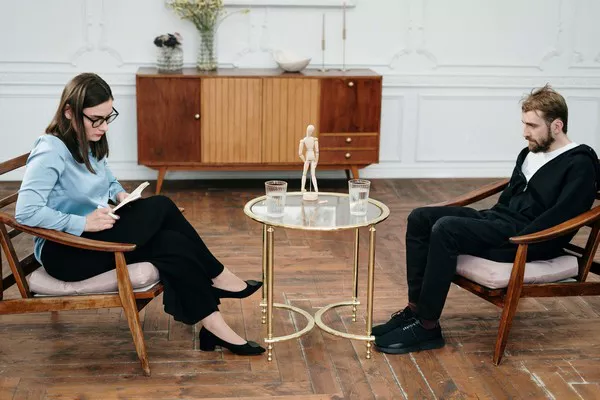In the midst of a cultural surge in therapy adoption, the United States finds itself at a critical juncture for mental health. The landscape is adorned with counseling references in bestselling literature, captivating podcasts, and cinematic creations. High-profile figures, spanning from professional athletes to renowned celebrities and influential politicians, unabashedly disclose their battles with mental well-being. An omnipresent discourse has taken root—one steeped in the parlance of therapy, sprinkling dialogues with allusions to gaslighting, toxic relationships, and personal boundaries.
This burgeoning mainstream mindfulness is mirrored by numerical evidence: the most recent federal projections underscore that approximately one in eight American adults presently relies on antidepressants, with one in five having recently sought some form of mental health support. This surge signifies an upswing of nearly 15 million individuals undergoing treatment since 2002. Notably, over the brief interlude between 2019 and 2022, the employment of mental health services surged by an astonishing 40% amongst the millions of adults under commercial insurance coverage, according to a comprehensive study featured in the JAMA Health Forum.
Nevertheless, an incongruity emerges. In a paradoxical twist, despite the escalating number of therapy adherents, the mental health landscape in the U.S. is confronting deterioration across numerous dimensions. Alarming data reveals a 30% upsurge in suicide rates since the turn of the millennium. Nearly one-third of American adults presently admit to grappling with symptoms indicative of depression or anxiety—a figure thrice as large as that of 2019. Additionally, approximately one in 25 adults contends with severe mental illnesses like bipolar disorder or schizophrenia. Recent figures divulge that a mere 31% of adults in the U.S. perceive their mental well-being as “excellent,” marking a regression from the 43% reported two decades prior.
This puzzling regression defies the trajectory even as more individuals proactively seek professional care.
Dr. Robert Trestman, the esteemed head of the American Psychiatric Association’s Council on Healthcare Systems and Financing, contends that myriad factors are concurrently contributing—some with affirmative implications and others with a more adverse tenor. In a positive vein, the increasing societal acceptance of mental health issues and the mainstreaming of therapy have emboldened more individuals to seek assistance, thereby elevating the overall volume of diagnoses and treatment.
Yet, as Trestman underscores, a less sanguine undercurrent persists. The repercussions of societal upheavals, most notably the pandemic and the seismic ripples of the Great Recession, have engendered an augmented demand for services, thereby exerting undue strain on an already taxed system. Consequently, a segment of the populace finds itself unable to secure the requisite support, hindering their ability to access the assistance they yearn for and necessitate.
Nevertheless, there are experts who proffer a perspective that probes beneath the surface of access inadequacies, delving into the bedrock of modern psychiatry itself. From their vantage, the quandary is not solely characterized by the discord between demand and supply; it resonates with the inherent limitations of prevailing therapeutic modalities and pharmaceutical interventions, which merely skim the surface of an immense expanse of unmet need.



























